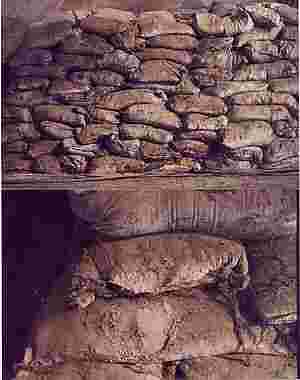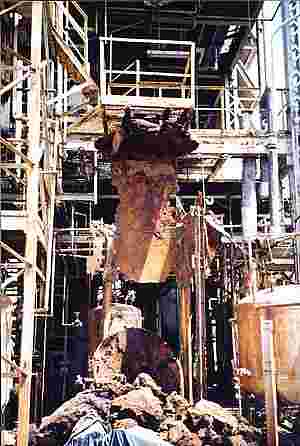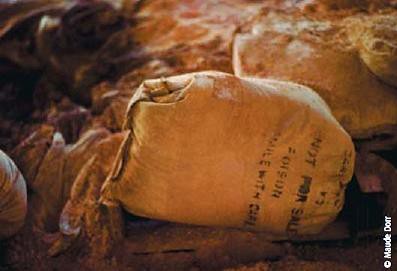By Pervez Bari, TwoCircles.net,
Even though after 25 years hundreds of thousands of survivors of the Bhopal Gas Tragedy, the world’s worst industrial disaster, plagued by innumerable diseases continue to suffer incessantly, the governments of the day instead of helping them out to lessen their pains think their prime duty is to downplay the whole episode to present a goody-goody picture before the world at large on 25th anniversary of the tragedy.
A feeling persists among the gas tragedy survivors and the NGOs working for their welfare that the Centre and the State Governments are out to bail out Dow Chemical Company, the owner of Union Carbide Corporation, (UCC), now after purchasing it, from the liabilities of the tragedy. The governments hope to use the 25th anniversary as an occasion to bury the disaster along with all the pending liabilities.
It may be recalled here that in the fateful intervening night of December 2/3, 1984 when nearly 40 tonnes of Methyl Iso Cyanate, (MIC), and other lethal gases spewed out of the Union Carbide Corporation’s pesticide plant in Bhopal, the capital city of central Indian state of Madhya Pradesh, exposing over 5,00,000 people to the toxic fumes. While 25,000-35,000 people have died since then and hundreds of thousands of persons have been maimed for life.

It may be pointed out here that at the beginning of August 1999, Dow Chemical Company purchased Union Carbide Corporation for $9.3 billion in stock. As of 2007, Dow is the second largest chemical manufacturer in the world by revenue (after BASF) and as of February 2009, the third-largest chemical company in the world by market capitalization (after BASF and DuPont).
With the 25th anniversary of the Bhopal Gas Tragedy to be observed on December 3, 2009, a major controversy between the governments and the NGOs has erupted over the waste lying in the killer Union Carbide factory premises. The Central and Madhya Pradesh Governments are asserting that the waste was not toxic and that it was not responsible for polluting the groundwater in and around the areas.
The NGOs want Dow Chemicals, which took over Union Carbide, to clean up the site. But Dow is unwilling to do so on the ground that all liabilities regarding the disaster were settled when Union Carbide concluded a $470-million compensation settlement in 1989.
A few months back the UCC had denied it was the management’s fault and instead blamed the workers.
However, according to T.R. Chauhan, the author of ‘Bhopal: The Inside Story’, has refuted UCC’s claim. “There is enough evidence to prove that the management was responsible for the cost-saving steps that led to the safety lapse that caused the leak,” says Chauhan, who was a control-room operator at the plant during the tragedy.
To prove the point the Madhya Pradesh Government has decided to throw open the doors of the Union Carbide factory in Bhopal, which now lies defunct , for general public to commemorate the 25th anniversary of the catastrophe and impress upon them that now the murky past is over and everything is normal.
Madhya Pradesh Bhopal Gas Tragedy Relief and Rehabilitation Minister Babulal Gaur has recently made an announcement that the waste lying in the Union Carbide factory site here for the past 25 years is no longer toxic enough to adversely affect human beings. If the Supreme Court allows it, the Madhya Pradesh Government would dispose of the waste in the State itself. Even the groundwater around the factory site, which was earlier considered to be contaminated due to the deadly gas leak in the intervening night between December 2/3, 1984, does not have anything to do with the disaster. He has based his statements on the basis of two recent reports, which have concurred that the waste is no more toxic.
Gaur said the Defense Research and Development Establishment (DRDE), Gwalior, conducted tests on samples collected from the factory site last year and concluded that “(i) All the samples viz. excavated waste, lime sludge, naphthol tar, reactor residue, semi-processed pesticide and Sevin tar have very low mammalian toxicity; and (ii) Based on the primary skin irritation test, all the six samples collected from ‘Stored Toxic Waste at the former UCIL, plant site at Bhopal’ are non-irritant.”
Based on this report, the State Government sought an opinion from the National Environmental Engineering Research Institute (NEERI), Nagpur, whether it was safe to open the factory site for the public for 15 days on the occasion of the 25 years of the disaster.
T. Chakrabarti, acting director, in his report dated November 4, 2009, says, “I concur with the decision that the Union Carbide factory be made open for the general public for a period of 15 days….The reason for concurring with the above mentioned idea lies in the fact that I, along with several Government officials, have visited the site umpteen number of times without experiencing any health problem. Experts from the Supreme Court Monitoring Committee, CPCB officials, officials from the Ministry of Petroleum and Natural Gas and officials from the MPPCB who were with me on different occasions did not experience any health problem and I still continue to interact with them even today.”
It may be mentioned here that the move by the Madhya Pradesh Government follows closely in the heels of a similar stunt by the Union Environment Minister Jairam Ramesh who claimed to have handled the toxic waste stored onsite and emerged unscathed when he was on a visit to Bhopal recently. Ramesh pointed to his still being alive as proof that the obsolete pesticides and residue stored inside the factory are harmless. On the same day, he had handled a rock python claiming that rock pythons were harmless.
Buoyed at these developments, the Madhya Pradesh Government has decided to open the gates for the public for 15 days. For the first time since the disaster took place, the common man would be free to move inside the killer factory’s premises. However, due to strong opposition from the survivors and NGOs the State Government has sought the Madhya Pradesh High Court’s permission to throw open the gates of the factory.
In this context it may be recalled that on October 29, 2005, the High Court had ordered that “the factory premises should be appropriately guarded by deputing armed guards so that no outside can enter into the factory premises, for in the factory premises toxic materials have been stored and it cannot be regarded as a garden, park or laboratory where children come to play.”
So far, it was believed that the groundwater around the factory site had got contaminated due to the waste lying inside. However, in a new twist to the case, which may give rise to fresh controversy, Gaur refuted the popular belief. He said, “The groundwater has been contaminated because of the oil depots of petrol, diesel and kerosene near the area.”

The State Government had dumped about 40 metric tonnes of waste last year in Pithampur near Indore. A PIL was filed against the dumping in the Jabalpur High Court, which ordered incineration of the waste in Ankleshwar, Gujarat. The Gujarat Government moved the apex court against this order. Since then, the matter is sub-judice there.
However, the NGOs and survivors have vehemently refuted the ministers representing the Union and the state governments claim and said opening up Bhopal’s “Death Factory” is a dangerous publicity stunt. The International Campaign for Justice in Bhopal, (ICJB), a prominent NGO providing medical relief and agitating for the rights of the survivors, member Ms Rachna Dhingra has termed the announcement to throw open the factory gates for public visits as a dangerous publicity stunt. She said the victims of the toxic disaster would do all that is in their capacity to discourage the public from entering the factory premises and harming themselves. She has pointed to more than 10 Governmental and non-Governmental studies that confirm the presence of highly toxic chemicals in the soil and environment of the factory site.
ICJB quoted a 1999 study by Greenpeace, which estimated that more than 20 percent of the factory site is contaminated, also found elevated levels of mercury, lead, nickel, copper, chromium, hexachloro-cyclo-hexane, chloro-benzene and Sevin in soil samples taken from within the factory. Mercury levels at one sample location were more than 6 million times what is expected in uncontaminated areas. Mercury is a potent neurotoxin that can enter the human body through inhalation, contact and ingestion.
According to Dr. P.M. Bhargava, an eminent scientist and founder director of the Centre for Cellular and Molecular Biology, “the site is completely unsafe and you can’t put your foot on the ground”. Unlike certain other toxins, persistent organic pollutants like hexachlorocyclo-hexane, and heavy metals like mercury, lead, nickel and chromium persist in the environment and do not disappear over time. The potency and levels of these chemicals will remain largely unchanged over extended periods of time, he asserted.
Syed Mohammad Irfan of the Bhopal Gas Peedit Mahila Purush Sangarsh Morcha says: “Rather than clean-up the site, they are now engaged in cleaning up their image through deceit and denial”. As victims of toxic contamination, we are interested in ensuring that members of the public do not harm themselves by unquestioningly buying the State Government’s assurance that the site is safe. Before the 1984 disaster, we were repeatedly told by the Government that the factory was safe, Irfan said.
The NGOs have said that the contamination can be verified by scientific studies, and that as victims of one toxic disaster, they will do all that is in their capacity to discourage general public from entering the factory premises and harming themselves. “To say that all poisons kill you on contact is to ignore what science tells you about the subtler and longer-term effects of toxins. Do you die after smoking a cigarette?” asked Rashida Bee, a Goldman environmental award winner and leader of the Bhopal Gas Affected Women Stationery Workers Association.
In addition to the contamination and toxic wastes inside the factory, several thousand tons of contaminated soil and wastes are lying inside the solar evaporation ponds outside the factory.
Meanwhile, Abdul Jabbar, convener of another NGO namely Bhopal Gas Peedit Mahila Udyog Sangathan, (BGPMUS), a Women Gas Tragedy Victims Organization, said he didn’t have words to express his disgust.
“It is improper and objectionable for the minister to speak like this. The matter is sub-judice. Gaur’s department and the state government have filed several affidavits in courts justifying our claim that there is a huge stockpile of toxic waste,” Abdul Jabbar, a gas victim himself, said.
Taking a dig at the Madhya Pradesh Government’s move, Abdul Jabbar said it was being projected as if the heaven gates were being opened which would solve all the problems of the gas-affected people. He asked, “If the groundwater had not been contaminated by the factory waste, why did the Supreme Court order providing tap water to the residents of 11 colonies living around the factory premises?”
Following testing by the State Government, several hand-pumps had either being removed or painted red with the label stating that water was not potable. Further, the Government had installed 56 tanks of about 10,000 lit. capacity to provide water to the residents. Following the apex court order, the Government was making arrangements to provide tap water at a cost of Rs 17 crore in the 11 identified colonies.
Both Abdul Jabbar and Ms Dhingra said the chemicals found in the groundwater were the same as found in the waste. Abdul Jabbar added that there were five other colonies where the groundwater had been contaminated by the oil depots around.
Digvijay Singh, a former chief minister of Madhya Pradesh, who governed the state from 1993 to 2003, always denied that underground water reserves were contaminated. To prove the point, the then minister in charge of gas relief and rehabilitation, Arif Aqueel, drank water from taps located in areas around the plant.
Meanwhile, neither the Government of India nor the Government of Madhya Pradesh seems to have drawn appropriate lessons from the gruesome tragedy. Instead, they have been pursuing such reckless policies that have the potential to create Bhopal-type situations at several places across the country. In fact, millions of citizens across the country have since been exposed to a verity of toxic substances at their place of work as well as from exposure to other hazardous materials that have been released into the environment by multi-national companies and local industries.
It will not be exaggeration to say that these companies have been emboldened to act in such thoughtless manner because no action has been initiated against the culprits involved in the Bhopal gas tragedy in the last 25 years and there is no sign that any action would be initiated against them in the near future. Especially, the multi-national companies seem to have drawn the inference that they can destroy the health and environment of this country without fear of being punished or ever held accountable in any way for their outrageous actions.
Even 25 years after the Bhopal disaster: (i) the culprits responsible for the crime are yet to be punished. (ii) The gas-victims have not been awarded just compensation. (iii) 6000 gas-victims continue to seek medical treatment for disaster-related ailments. (iv) Scores of gas-victims continue to die due to lack of proper medical treatment. (v) Government’s financial rehabilitation program has almost come to an end. (vi) No provision to provide pension to thousands of widows of gas-victims, orphans and other handicapped. (vii) Under environmental rehabilitation programme, the Government has failed to provide safe drinking water, toilets or clean environment to the needy gas-victims. (viii) The plan for a memorial for the victims of the of tragedy is still on paper.

Even after 25 years, Bhopal is the worst example of black deeds of multinational companies and government’s irresponsibility towards citizens. For many of the gas-victims, the situation is not very different from the day of tragedy. Till date, neither proper compensation has been awarded nor have appropriate arrangements been made for their treatment and rehabilitation.
According to Abdul Jabbar more than 25,000 gas victims have apparently died so far due to the toxic effects of the gases while more than three lakh victims have been issued health cards to enable them to get continuous treatment for various disaster-related ailments. Instead of attempting to medically, economically and socially rehabilitate the gas victims, the Central and State governments are working against their own people and defending the interests of Union Carbide.
Moreover, the 1989 Bhopal Settlement between the Union of India and Union Carbide was based on assumption that only 3000 gas-victims had died in the tragedy and another 1,02,000 had suffered injuries in varying degree. However, the Claims Courts established by the Welfare Commissioner, Bhopal, has determined that there were in all 574,367 gas-victims including dead, which effectively meant that the magnitude of the dead and injured was at least five times more than what was assumed at the time of the Settlement, Abdul Jabbar argues.
Abdul Jabbar says criminal cases against Union Carbide and its accused officials are proceeding at a snail’s space and it is still before the Court of the Chief Judicial Magistrate, Bhopal. Medical, economical and social rehabilitation work undertaken by the State and Central governments have been inadequate and far below the requirements.
Due to all these reasons BGPMUS has been continuously fighting for justice for the gas-victims for past 25 years. “We are engaged in agitation work and as well as legal struggle in association with the Bhopal Gas Peedith Sangharsh Sahyog Samiti, (BGPSSS), from the Supreme Court of India to the Bhopal District Court.
It may be recalled here that when the Union Carbide plant was established in Bhopal in 1969, it was regarded as an integral part of India’s ‘Green Revolution’, a government scheme to feed the masses by boosting grain production using high-yield seeds that demanded a heavy use of fertilisers and pesticides. The plant was built to manufacture the pesticide Carbaryl, under the trademark Sevin, which had been developed in 1957 as a ‘safe’ alternative to the controversial dichlorodiphenyltrichloroethane (DDT). ‘Science helps build a new India,’ ran the Union Carbide slogan.
Union Carbide Corporation was an American company, but the plant was run by a local subsidiary, Union Carbide India Limited (UCIL) in which UCC had a 51 per cent share. Bhopal had been chosen as the location because of its geographical position, and because of the ready supply of cheap labour.
With such state of affairs prevailing the survivors of the world’s worst tragedy are unable to see light at the end of the tunnel and are resigned to fate. ([email protected])
